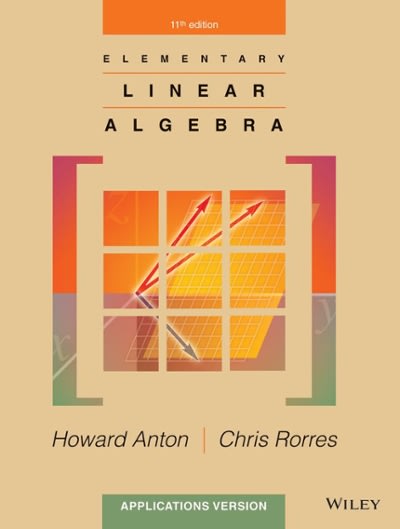Question
A 2021 article in The New England Journal of Medicine details the results of a randomized clinical trial designed to the effects of maintaining or
A 2021 article in The New England Journal of Medicine details the results of a randomized clinical trial designed to the effects of maintaining or discontinuing antidepressant therapy for persons being treated with this medication(s).
As per the authors:
"Patients with depression who are treated in primary care practices may receive antidepressants for prolonged periods. Data are limited on the effects of maintaining or discontinuing antidepressant therapy in this setting."
"We conducted a randomized, double-blind trial involving adults who were being treated in 150 general practices in the United Kingdom. All the patients had a history of at least two depressive episodes or had been taking antidepressants for 2 years or longer and felt well enough to consider stopping antidepressants. Patients who had received citalopram, fluoxetine, sertraline, or mirtazapine were randomly assigned in a 1:1 ratio to maintain their current antidepressant therapy (maintenance group) or to taper and discontinue such therapy with the use of matching placebo (discontinuation group). The primary outcome was the first relapse of depression during the 52-week trial period, as evaluated in a time-to-event analysis.
The following Kaplan-Meier curves show the percentage of subjects in each group remaining relapse free beyond the corresponding time on the horizontal axis. The incidence rate ratio (and 95% confidence interval) of relapse in the one-year follow-up for the discontinuation group compared to the maintenance group is 2.06 (1.56 - 2.70). After one-year of follow-up, an estimated 61% of the maintenance group had not relapsed, as compared to an estimated 44% who had not yet relapsed in the discontinuation group.
Kaplan-Meier graph link: https://docs.google.com/spreadsheets/d/1iFcjUzEYIe-FzUS5_nK7d0lZiEaBGrWNcDGBYqQqsU0/edit#gid=0
Question: There were 232 subjects randomized to the maintenance group cohort, and 63 still at risk of relapse after 1 year of follow-up. In other words, 27% of this cohort was still being followed in the study at the end of the study period. However, the corresponding KaplanMeier curve estimate of the percentage of subjects in the cohort who had not relapsed as of one-year after randomization is 61%. How could this have happened?
a. There was very little censoring, if any, prior to one-year among the observations in the maintenance group.
b. The researchers deleted all of the censored observations in the maintenance group prior to estimating the given Kaplan-Meier curve.
c. Some of the observations in the maintenance group were censored before one year (lost to follow-up)
d. The Kaplan-Meier curve estimate at one-year is the risk of relapse among only those still at risk of relapse one-year after randomization.
Question: Suppose you oversee the mental health related operations for a multi-center community clinic with a similar population of patients with depression as the population sampled for this study. Because of the expense of providing anti-depressants to clients with depressive disorders, you are doing a cost benefits analysis of tapering (discontinuing) such medications. Your clinic has 1,000 clients currently taking antidepressant medication(s) who are not experiencing depressive symptoms . How many more/less relapses (return to having depressive symptoms) would be expected in the year following discontinuation of medication(s) were these 1,000 patients to stop taking antidepressants?
a. 770 fewer relapses
b. 330 more relapses
c. 170 fewer relapses
d. 170 more relapses
Question: The estimated percentage of persons surviving (still relapse free) beyond 26 weeks in the maintenance sample is approximately 74% (i.e. (S hat maintenance = (t = 26 weeks) = 0.74). Suppose the researchers dropped all censored observations from the data and then re-estimated the entire survival curve for the vaccine sample, including the value at 26 weeks S hat maintenance = (t = 26 weeks) = 0.74 , using only the data for persons who relapsed over the follow-up period.). In other words, the researchers deleted all censored observations from the dataset and then recomputed the Kaplan-Meier curve estimates. How would this second estimate of (S hat maintenance = (t = 26 weeks) = 0.74) compare, in value, to 0.74?
a. The second estimate would be less than or equal to 0.74 depending on how many observations were censored prior to 26 weeks of follow-up
b. The second estimate would be greater than 0.74.
c. The second estimate would be exactly equal to 0.74, because all relapses in the maintenance groups happened before 26 weeks of follow-up.
d. The second estimate should be similar to 0.74, but there is no way to predict whether it would be larger, smaller or equal to 0.74.
Step by Step Solution
There are 3 Steps involved in it
Step: 1

Get Instant Access to Expert-Tailored Solutions
See step-by-step solutions with expert insights and AI powered tools for academic success
Step: 2

Step: 3

Ace Your Homework with AI
Get the answers you need in no time with our AI-driven, step-by-step assistance
Get Started


